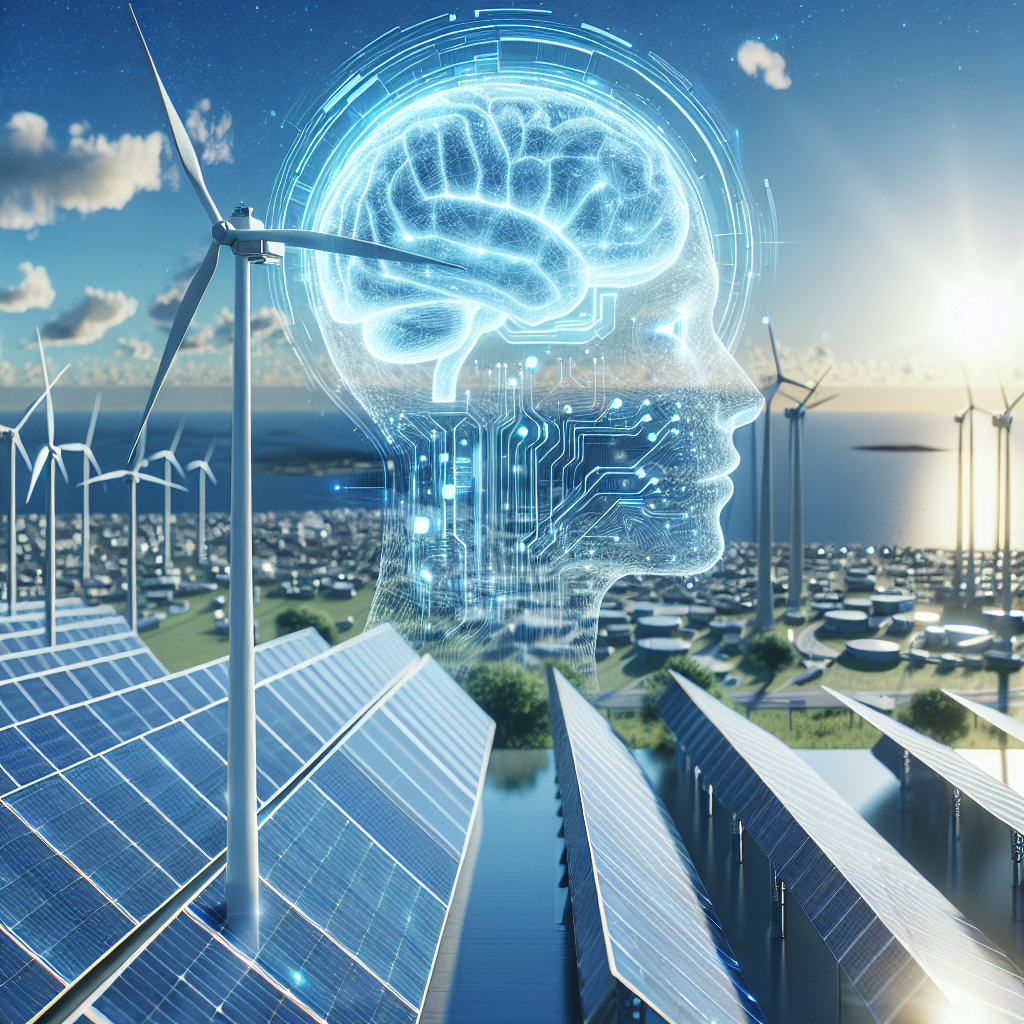As the world continues to grapple with the effects of climate change, the need for sustainable and renewable sources of energy has become increasingly urgent. One of the key challenges in the renewable energy sector is the variability of sources such as wind and solar power. This variability can make it difficult to predict and optimize energy production, leading to inefficiencies and increased costs.
Artificial intelligence (AI) algorithms have emerged as powerful tools for optimizing renewable energy production. By using machine learning and data analytics, these algorithms can analyze large amounts of data in real-time to predict energy production, optimize energy generation, and reduce costs. In this article, we will explore how AI algorithms are being used to optimize renewable energy production and address some frequently asked questions about this technology.
AI Algorithms for Predicting Energy Production
One of the key challenges in renewable energy production is the variability of energy sources such as wind and solar power. AI algorithms can help predict energy production by analyzing historical data, weather patterns, and other variables to forecast energy generation. By accurately predicting energy production, renewable energy operators can better plan and optimize their generation schedules, reducing costs and improving efficiency.
For example, AI algorithms can analyze historical weather data to predict wind speeds and solar radiation levels, which are key factors in determining energy production from wind and solar farms. By using this information to optimize generation schedules, operators can ensure that they are maximizing energy production while minimizing costs.
AI Algorithms for Optimizing Energy Generation
In addition to predicting energy production, AI algorithms can also optimize energy generation in real-time. By continuously analyzing data from sensors, weather forecasts, and other sources, these algorithms can adjust generation schedules to respond to changes in energy demand, weather conditions, and other variables. This dynamic optimization can help renewable energy operators maximize energy production and minimize costs.
For example, AI algorithms can adjust the output of wind turbines or solar panels based on real-time data on wind speeds, cloud cover, and energy demand. By optimizing generation schedules in this way, operators can ensure that they are producing the right amount of energy at the right time, reducing waste and improving efficiency.
AI Algorithms for Reducing Costs
One of the key benefits of using AI algorithms for optimizing renewable energy production is the potential to reduce costs. By predicting energy production, optimizing generation schedules, and responding to changes in energy demand, operators can maximize energy production while minimizing costs associated with fuel, maintenance, and other expenses.
For example, by using AI algorithms to predict energy production and optimize generation schedules, operators can reduce the need for expensive backup power sources or energy storage systems. This can help lower overall operating costs and improve the financial viability of renewable energy projects.
Frequently Asked Questions
Q: How accurate are AI algorithms for predicting energy production?
A: AI algorithms can be highly accurate for predicting energy production, especially when they are trained on large amounts of historical data and validated against real-world conditions. By continuously updating and refining their predictions based on new data, these algorithms can provide reliable forecasts of energy production.
Q: How can AI algorithms help optimize energy generation?
A: AI algorithms can optimize energy generation by analyzing real-time data on weather conditions, energy demand, and other variables to adjust generation schedules in response to changing conditions. By dynamically optimizing generation schedules, operators can maximize energy production and minimize costs.
Q: What are the key benefits of using AI algorithms for optimizing renewable energy production?
A: The key benefits of using AI algorithms for optimizing renewable energy production include improved predictability, increased efficiency, and reduced costs. By accurately predicting energy production, optimizing generation schedules, and responding to changes in energy demand, operators can maximize energy production while minimizing expenses.
Q: Are there any limitations to using AI algorithms for optimizing renewable energy production?
A: While AI algorithms can be highly effective for optimizing renewable energy production, there are some limitations to consider. These include the need for large amounts of data, the potential for errors in predictions, and the complexity of integrating AI algorithms into existing energy systems. However, with proper training and validation, these limitations can be minimized.
In conclusion, AI algorithms have the potential to revolutionize the renewable energy sector by optimizing energy production, reducing costs, and improving efficiency. By accurately predicting energy production, optimizing generation schedules, and responding to changes in energy demand, these algorithms can help renewable energy operators maximize their output and minimize their environmental impact. As the technology continues to evolve, AI algorithms are likely to play an increasingly important role in the transition to a more sustainable and renewable energy future.

